Specialized mechanical areas, such as automobile engineering, very much require accuracy when dealing with technical translations, and this includes the translation of the term wheel bearing from English into Spanish and vice versa. This is because the term itself is a specialized one, and one needs to grasp the idea it represents in both languages to be able to translate effectively. The purpose of this guide is to create a general structure that will help any fan, specialist, or translator to make such translations fast and correctly. Be free to use this article anytime you translate documents that contain information about wheel bearings, regardless of whether they are technical design specifications, maintenance, or bilingual team projects.
What is the correct Spanish translation for “wheel bearing”?
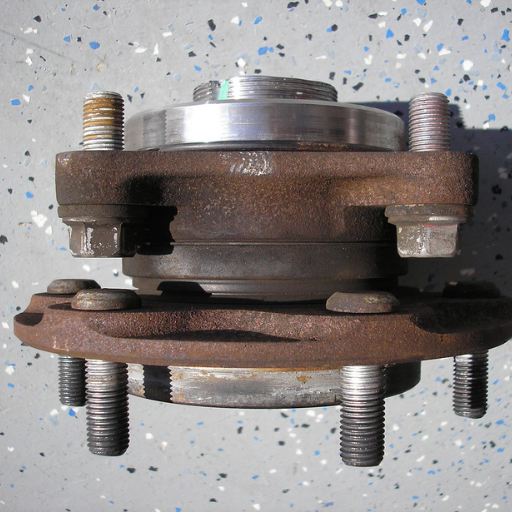
The accurate translation of the word ‘wheel bearing’ in Spanish is ‘rodamiento de rueda.’ This term is common in the automotive and mechanical fields in Spanish-speaking countries and is appreciated in technical documentation for being terse and easily understood.
Understanding the term “rodamiento de rueda”
In this case, ‘rodamiento de rueda’ as a term can be broken down into two parts. From my expertise and experience in the automotive industry, “Rodamiento” pertains to a bearing, which is a mechanical part meant to minimize friction between components in relative motion. On the other hand, ‘de Rueda’ clarifies its use of the wheel. Put together, this term describes an element known as a wheel bearing, which is responsible for providing a smooth motion to the wheels while carrying the weight of the vehicle. This particular term should be correctly understood and employed when used in a technical situation, for instance, when one is working across languages coupled with cultural barriers.
Exploring alternative translations and regional variations
As for specialized communication, I focus on the experience that I gained while working with international divisions if I need to look for other versions and dialects. Language is not the currency of communication; it is the control over the concepts that the words represent, which can differ across geographic locations. When I am discussing this subject, this is what I do to avoid inexactness and misunderstandings:
- Context of Use – as long as the term is used properly and as intended. For example, in some parts of the world, “rodamiento” is a general term for any kind of bearing, while in other parts, one can say “rodamiento de rueda” to mean wheel bearings. It is useful to understand the context in order to avoid the possibility that misnomers arise and divergence between the language used and the technical requirements posed.
- Industry Standards – Most of the branches of the industry have terminology that is more or less standardized; this will assist in the translations. For instance, in automotive or mechanical engineering areas, there is a tendency to use standard terminology, causing the areas to be confused.
- Cultural and Linguistic Nuance – Language is part of the culture and therefore, a word may assume a slightly different meaning. For instance, in some countries of the Spanish-speaking world, a different term, such as “balero,” may be substituted for “rodamiento.” It is also interesting to note these cultural and regional variations so that we can adjust accordingly.
- Precision in Technical Specifications – When talking about the different components on a wheel, such as wheel bearings, technical parameters such as load bearing, rotational speed, and the type of material to be used have to be stated for effective communication. These ones help ensure everyone is not only familiar with the term but also the functioning of the part in question.
In light of these factors, I make certain that the translation and terminology not only meet the respective language requirements of the region but also accept the specific technical requirements of the project. The need to follow this systematic approach ensures that I am able to fill in the communication gaps.
Contextual usage of wheel bearing in Spanish
In Spanish, “wheel bearing” carries a connotation that must correspond to the specific mechanical context. Many Spanish-speaking countries such as Spain and Latin American countries refer to this part of the automobile as “rodamiento de Rueda,” which claims it as its proper meaning. It is also very important to consider regional colloquialisms or specific terms used within industries in order to communicate accurately in the various Spanish-speaking markets.
How do you pronounce “wheel bearing” in Spanish?
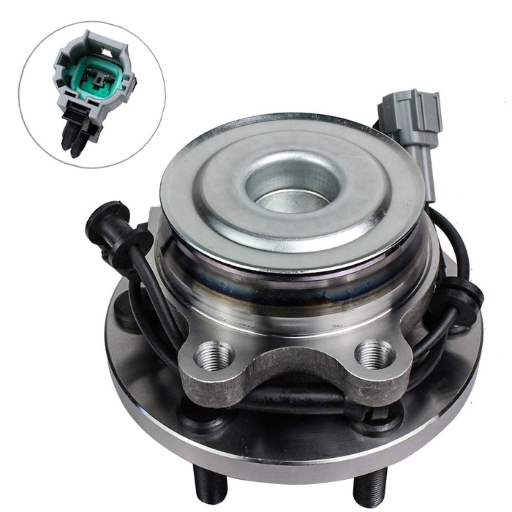
I have encountered the term as “wheel bearing” which in Spanish goes as “roh-DAH-mien-toh deh RWEH-dah”. There is a point in stressing the correct syllables so as to ensure that there is no misunderstanding, especially in a technical conversation or during cross-border engagements.
Phonetic breakdown of “rodamiento de rueda”
Alright! To Pronounce It Correctly, We Can Apply a Pronunciation Break:
- “Ro” -This syllable is pronounced as “roh” (robot sounds similar to this word).
- “da” -This should be pronounced as ‘dah’ with a slight ‘d’ sound as in the word ‘data’ within the first part of ‘da’.
- “mien” – This word could be pronounced as ‘myen’ where the ‘y’ sound is subtle to glide into the subsequent sound.
- “to” – It is pronounced as “toh” and is much closer to the “toe” with which one comes across on the foot.
- “de” -This can be said as “de”, but ‘e’ here must sound a bit clear.
- “rue” -This is pronounced as ‘rweh’ where ‘r’ gets slightly rolled to blend into the subsequent syllable.
- “da” – No change for ‘dah’ as it was for the first time.
Aquestes són les cincen alfabètiques de la vara que, en final, posem juntes: roh-DAH-myen-toh deh RWEH-dah. However, when it comes to pronunciation, experts recommend starting by pronouncing each of the syllables individually.
Audio pronunciation and practice tips
In order to improve your pronunciation, the process of listening and repeating is crucial. A good place to start is with audio recordings of the full words or phrases whose pronunciation you wish to learn. Start off by practicing the syllables of the word and making sure to focus on each separately until you’re confident. Making use of language programs or mobile apps that explain pronunciation through tone and pace repetition would also be useful here. It is also useful to record your own speech and then match your recordings with native speech, focusing on differences that require improvement. The key to success is a consistent practice that is precise and focused – your fluency and accent will improve over time.
What are common phrases related to wheel bearings in Spanish?
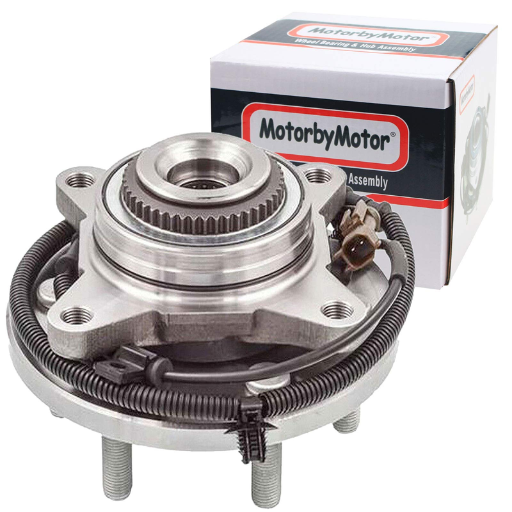
The Spanish language encompasses many words, including phrases crucial for communication in the automotive industry, like wheel bearings. First, the word ‘rodamientos de rueda’ translates to the most commonly used phrase for wheel bearings. Sometimes, you may find words that sound like ‘Mantenimiento de los rodamientos,’ which is used when referring to the maintenance of bearings, or ‘desgaste de las piezas,’ which signifies wearing parts. The term “ruido en el rodamiento” translates to noise in the bearing and is often used when diagnosing a problem. Knowing these phrases facilitates better and clearer communication in technical contexts.
Essential vocabulary for automotive discussions
The vehicle’s components, repairs as well as diagnostics are some of the most important aspects in the field of automobiles, and there are certain terms which are used often such as ‘bearings’, ‘wear’ and maintenance among others, it is quite easy to understand why. The importance of being able to use the industry’s terminology cannot be overstated, as it undoubtedly improves communications and understanding of the problems within that specific technical area.
Colloquial expressions involving wheel bearings
For instance, when talking about wheel bearings, people say ‘those bearings are shot’. It’s a straightforward way of saying that they aren’t functioning because they’re utterly worn out. Another one would be ‘the wheels are singing,’ which is used to indicate the distinct sound phenomenon that can be heard when driving the vehicle, most of the time caused by the failure of the wheel bearings. We also say ‘it’s running rough on the hubs’ which loosely translates to how the bearings are not functioning properly adding to the shaking or jerky motion. Such day-to-day phrases make it easier to point out potential issues rather informally, especially to the vehicle owners or other people in the same industry.
Technical terms in Spanish auto repair manuals
En lo que respecta a español auto reparación manuales, se tiene la mezcla de términos técnicos reales y los usados en la región. A mi juicio, perception of such “foreign” words depends on the knowledge of the relevant language and the knowledge of the particular industry. Here are a few key parameters I consider when working with Spanish repair manuals:
- Precision of terminology – Terms such as “cojinete de rueda” and “bujia” are direct translations of the two, but some other terms like, “mordaza de freno” may use different wording, but mostly, depending on the regional context, one may find slight differences for the term in question.
- Context of the manual – In addition, some diagrams have been added by the manufacturers, which illustrate some parts clarifying the term if it’s not very straightforward. For instance, a “junta homocinética” should make sense around the context of the drivetrain. If not, it can be seen more simply as a CV joint.
- Regional variations – Countries have been found to have varying translations of the Spanish language for some terms related to automotive repairs. For example, in Spain, “Atlanta” is used to mean the rim, while in some parts of Latin America, it is used to mean the entire wheel.
- Technical abbreviations – Manuals often include short forms of terms such as ABS or anti-lock braking system and other short forms that are universal throughout the globe. Make sure to cross-reference these, as some regions/service providers use different abbreviated forms for the same meaning.
By focusing on these parameters—terminology precision, manual context, regional variations, and controlled vocabulary —, I have established a proven methodology for understanding Spanish automobile repair manuals adequately. This is all achieved by combining technical language skills with linguistic skills.
How can I use “wheel bearing” in Spanish sentences?
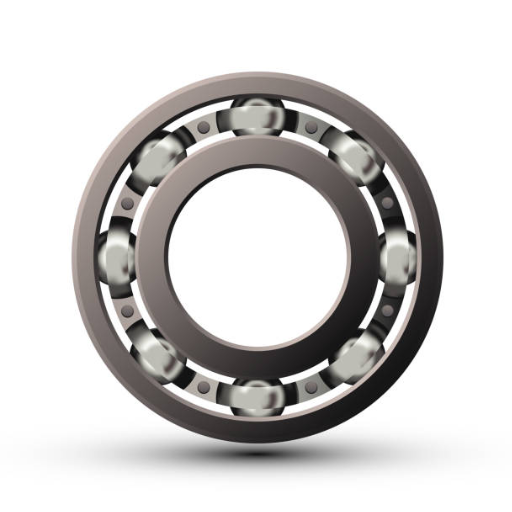
Para poder hacer uso de “wheel bearing” en oraciones en español, en ocasiones puede recurrir a las palabras rodamiento o rodamiento de rueda. Por ejemplo, para un reparacion podri decirse, “Es necesario reemplazar el rodamiento de rueda para evitar daños mayores al eje”. En el caso de querer explicar su función, se podría utilizar por ejemplo, “El rodamiento asegura que la rueda gire suavemente sin causar fricción excesiva.” De esta manera, al adaptar la oracion a la situación tecnica, yo soy capaz to preserve the precision of my communication.
Example sentences for everyday conversations
On the other hand, for specialists who want to be more precise, the term ‘rodamiento’ is applicable in those circumstances. For example, in a repair case, a simple exposition could be, “Reemplace el rodamiento desgastado para evitar fallas mec nicas.” Or, If its function is explained, then a simple one-liner, the “COPY,” says: “El rodamiento facilita el giro de las ruedas reduciendo la friction, “can always get the point across in a professional manner.
Translating complex wheel bearing descriptions
When attempting to explain a wider range of complex wheel-bearing descriptions, the tendency is to make parts of the explanation specific. However, there are some crucial technical aspects that need to remain accurate. Following are some of the basic parameters which need to be taken into account one after the other:
- Material Composition
Wheels would wear out less often than other parts of the car if they were made of steel; thus, wheel bearings are produced from steel, demonstrating high tensile strength. This kind of material helps explain why wheel bearings may be used in so many different scenarios, being both robust and not failing easily.
- Type of Bearing
Each device works differently with specific functions, for instance, ball bearings, taper bearings and roller bearings. Therefore, knowing the type of bearing is important, otherwise, it would become difficult to describe the device, its functionality and, application.
- Load Capacity
Bearings must be able to withstand certain forces, namely, axial and radial forces, which are also load forces. Providing this kind of information could help correct them in places where they are appropriate.
- Lubrication Requirements
Overheating needs to be avoided and friction needs to be controlled, hence, lubrication is required. Making oil, grease, or other alternatives available highlights the importance of lubrication.
- Sealing Mechanism
Dirt and moisture, among other factors, contaminate the bearings; hence, seals were invented to protect them from these elements. How seals work needs to be explained for a better understanding of how the wear and tear of the bearing could be slowed down.
- Operating Conditions
Temperature limits, how fast the bearing is turned, and what the bearing is exposed to when not in use are all factors that determine where a specific bearing can be used. Explaining these factors would ensure that the correct bearing is selected for the correct purpose.
Focusing on these parameters in detail guarantees that even convoluted descriptions of the wheel bearings are simple to disseminate and act upon.
Are there any gender considerations for “wheel bearing” in Spanish?
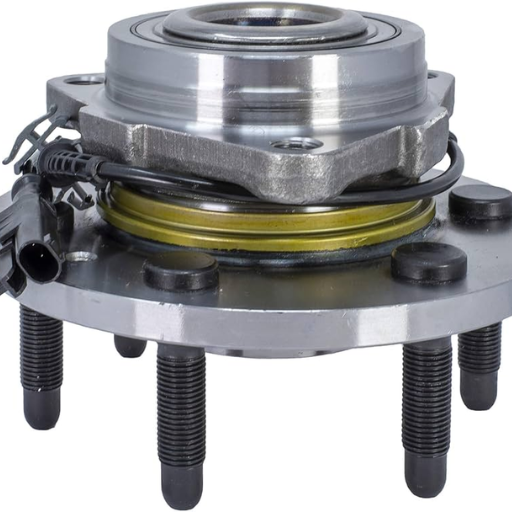
Indeed, the term “wheel bearing” will also be adapted to the linguistic gender aspects in Spanish. Like most of the nouns of the Spanish language, the process of gendering has also been grammaticalized. Here is more in detail:
- Translation and Gender Association
Spanish speakers often translate the term “wheel bearing” as cojinete de rueda or rodamiento de rueda.
- “Cojinete” There is a masculine, as shown by the article el (e.g., “el cojinete de rueda”).
-
“Rodamiento”: Also, this one is also masculine (e.g., “el rodamiento de rueda”).
- Usage and Context
Even though the terms are masculine, gender is considered grammatical only and has nothing to do with gender roles as far as application and function are concerned. The distinction between “cojinete” and “rodamiento” may be influenced by the terminological habits or dialects of a certain region.
- Relevance in Technical Contexts
Es importante realizar los correctos acuerdos gramaticales con las artículos masculinos (“el”, “un”) o adjetivos, cuando se habla de rodamientos en español. Por ejemplo:
- “El cojinete de rueda desgastado debe ser reemplazado.”
- “Un rodamiento de rueda de alta calidad soporta cargas pesadas.”
- Additional Considerations
En el idioma español que se habla en las distintas regiones puede haber variaciones en la terminologia, no obstante, el genero masculino es ubicuo en todas las grafias. Respective of the said technical terms, there is still no practice of using feminine forms for these terms within their lay use.
El uso correcto del género gramatical en español no sólo se enmarca en la norma lingüística, sino que además hace posible una comunicación profesional y precisa en áreas técnicas
Agreement rules for adjectives describing wheel bearings
In my practice, I have noted the importance of proper agreement between adjectives and the grammatical gender of terms such as rodamiento and rueda on aspects of comprehension and professionalism. For example, the form is required for any adjectives that describe a rodamiento, as it is a term of masculine usage. Hence, we would say un rodamiento resistente. On the other hand, the form in which rueda is a feminine noun will take adjectives of feminine characteristics such as una rueda robusta. It is worth noting that these agreement rules go beyond grammatical correctness. They portray a sense of professionalism which is critical when one is working with technical documents and communication.
What resources can help me translate wheel-bearing terminology accurately?
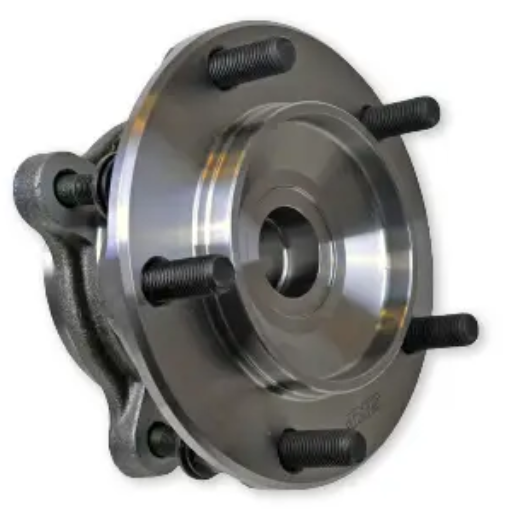
Following resources I recommend employing in order to accurately and consistently translate any referenced wheel bearing terms:
- Technical Dictionaries and Glossaries – Employ specialized dictionaries like Routledge Spanish Technical Dictionary or relevant technical terminology such as mechanical engineering glossaries.
- Standards and Documentation – Look at the worldwide standards, for example, documentation guidelines of ISO or DIN, which may have many international terms for parts, such as wheel bearings.
- Translation Memory Tools – Programs such as SDL Trados or MemoQ are able to create and offer adequate translations used in previous work to the documents for further standardization of the work.
- Industry Experts and Forums – Joining professional societies or working with English-speaking engineers or specific language communities may bring relevant information and contextual knowledge.
Merging such resources will enable translations to be obtained that are correct for the given subject as well as within the context.
Recommended Spanish-English automotive dictionaries
Due to my work as a professional, where I deal with technical translations on a daily basis, it is evident that I need precise and reliable resources that allow me to perform my work correctly. While compiling Spanish-English automotive dictionaries, I have identified a few of them as being especially useful. One frequent source that has an engineering and automotive slant is The Routledge Spanish Dictionary of Business, Commerce, and Finance. Another good source for them is the McGraw-Hill Spanish-English/English-Spanish Dictionary of Engineering and Technology since this covers terms that are relevant to car parts and systems. Also, I think that it is a good idea to consult the Oxford Spanish Dictionary; even though it might be general, it provides very good technical and specific definitions as long as it is used with specific terms in the industry. By using these respected resources, I make sure that the translation works in the automotive area, which requires high technical and contextual accuracy, are satisfied.
Online translation tools for technical terms
Using Online translation tools along with specialized ones can be beneficial, but only if used judiciously. There are many tools, such as DeepL or Google Translate, which can provide a decent translation when dealing with some general terms or phrases. However, the extent and degree of accuracy concerning technical terms can differ widely. For more accuracy in the automotive or engineering fields, these tools should be backed up by using insured dictionaries, glossaries, or some other professionals, ensuring accuracy and context correctness.
Spanish language forums for mechanics and car enthusiasts
Forums in Spanish are very helpful in broadening knowledge about the field and keeping abreast of developments in the community. Being a specialist in the industry, I turn to such forums as ForoCoches or Todo Mecánica to share knowledge with colleagues and fans of the profession. These forums have a lot of useful personal experiences, tips and tricks, and problem-solving methods related specifically to automotive mechanics. While taking part in such forums, I check every single piece of information I collect against reliable sources so that practical expertise and technological precision are combined in the course of my translation activities and help me keep pace with developments in the said area.
Reference
- SpanishDict – Wheel Bearings in Spanish: This source provides translations and regional variations for the term “wheel bearing.”
- Linguee – Wheel Bearing Translation: Linguee offers translations and examples of “wheel bearing” in context, which can be useful for understanding usage.
- SpanishDict – Wheel Bearing Translation: Another entry from SpanishDict that provides translations and example sentences for “wheel bearing.”
Frequently Asked Questions (FAQs)
Q: How can I translate wheel bearing into Spanish with confidence?
A: You can translate “wheel bearing” into Spanish as “rodamiento de la rueda.” To translate with confidence, consult reliable sources like a Spanish-English dictionary or use apps like Linguee, which provide examples for everything.
Q: What is the difference between “la” and “el” in Spanish when referring to wheel bearings?
A: In Spanish, “la” is the feminine article, and “el” is the masculine article. Since “rodamiento” is masculine, you would say “el rodamiento de la rueda” for “the wheel bearing.”
Q: Can you give me examples for everything related to wheel bearings in Spanish?
A: Certainly! For example, “El rodamiento de la rueda se necesita para el funcionamiento del vehículo” means “The wheel bearing is necessary for the vehicle’s operation.”
Q: What apps can help me with translations related to wheel bearings?
A: Apps like Linguee and other Spanish-English dictionary applications can help you translate terms like “wheel hub” and “bearing” with example sentences and audio pronunciations.
Q: How do I find the best English-to-Spanish translations for technical terms like wheel bearings?
A: To find the best translations, use a comprehensive dictionary of English-Spanish and look for external sources that provide authoritative translations and example sentences.
Q: Is “bearing” in Spanish the same as “rodamiento” when discussing vehicle parts?
A: Yes, “bearing” translates to “rodamiento” in Spanish, particularly when discussing vehicle parts like wheel bearings, which is “rodamiento de la rueda.”
Q: What are some common problems associated with wheel bearings that I should know in Spanish?
A: Common problems include “ruido” (noise) and “juego” (play), which can affect the “rodamiento de la rueda” and may lead to further issues if not addressed.
Q: How can I access additional resources for learning about wheel bearing translations?
A: You can access additional resources through online Spanish-English dictionaries, technical manuals, or forums that discuss automotive terms and provide examples in both languages.
Q: What does “se” signify in Spanish in the context of wheel bearing maintenance?
A: In Spanish, “se” is often used to indicate passive voice or reflexive constructions. For example, “Se debe revisar el rodamiento de la rueda” translates to “The wheel bearing should be checked.”
Q: Why is it important to understand the term “wheel hub” in relation to wheel bearings?
A: Understanding the term “wheel hub” is important because it refers to the component that houses the wheel bearing. In Spanish, “wheel hub” translates to “cubierta de la rueda,” which is crucial for proper maintenance and repair discussions.
